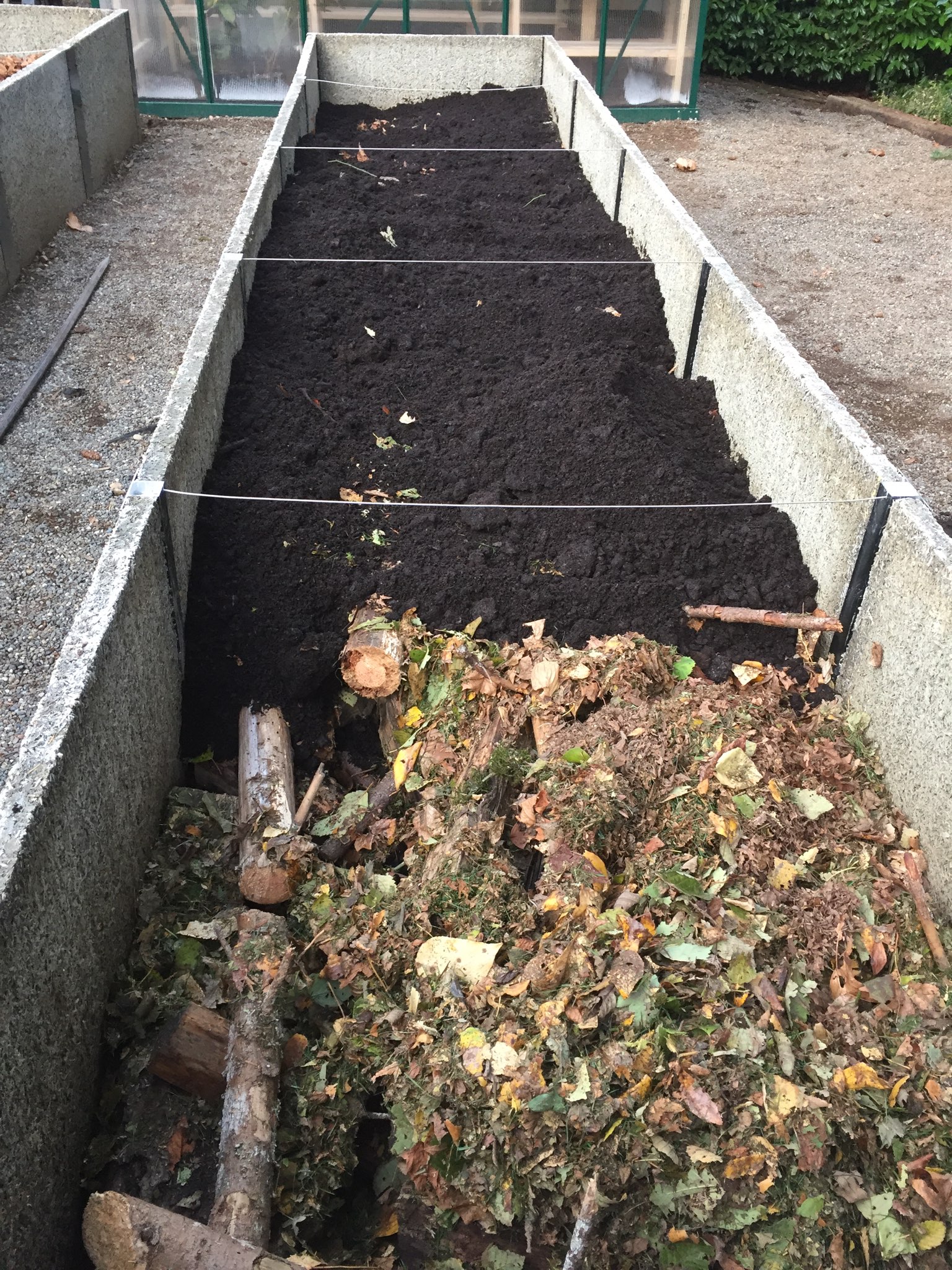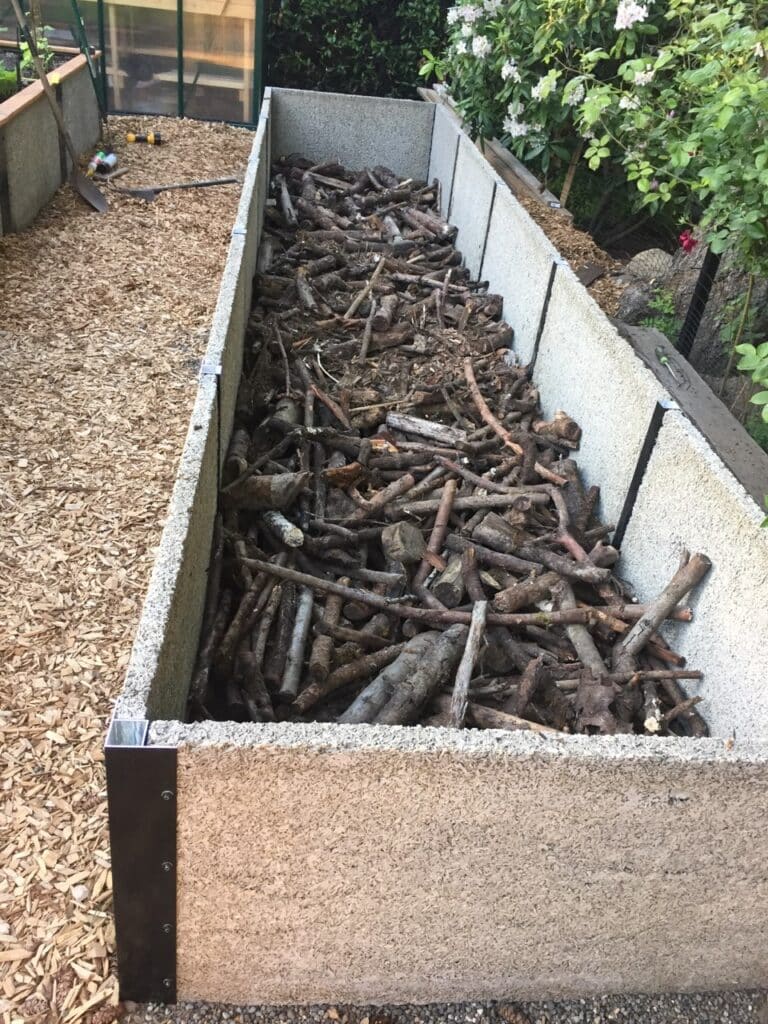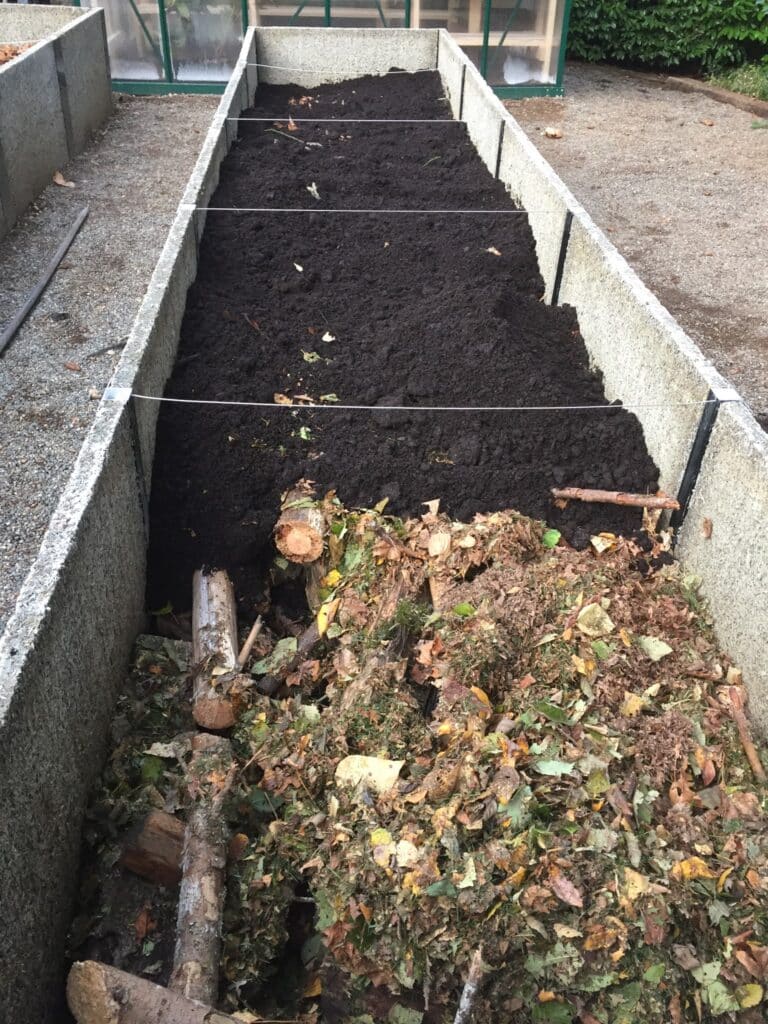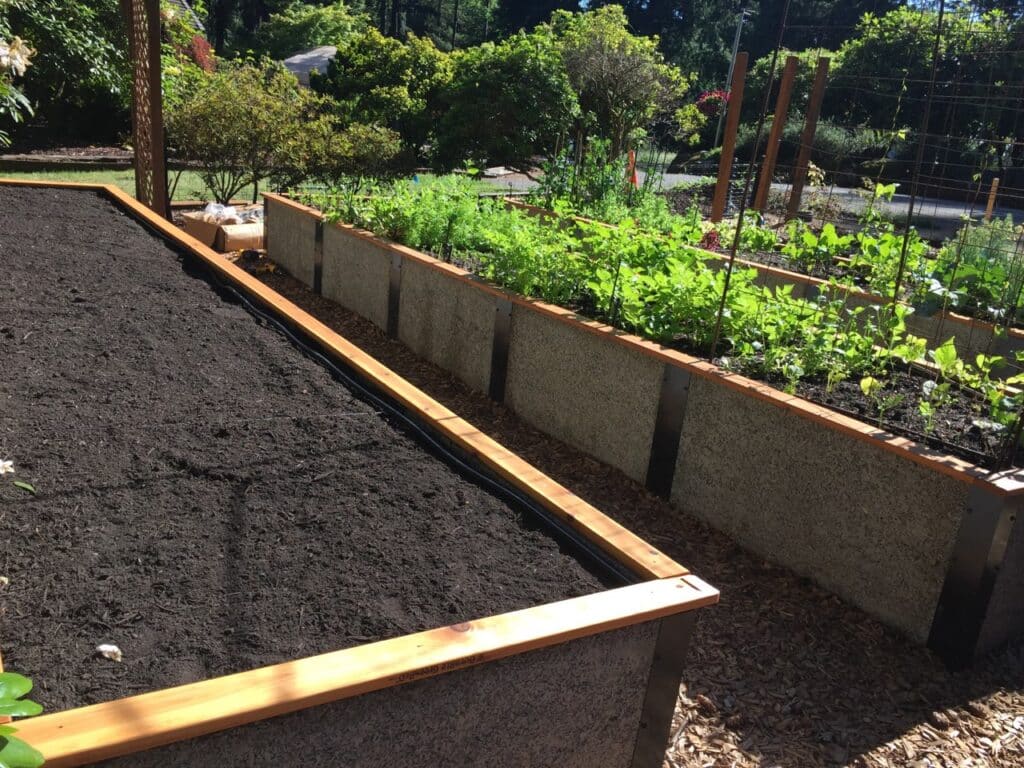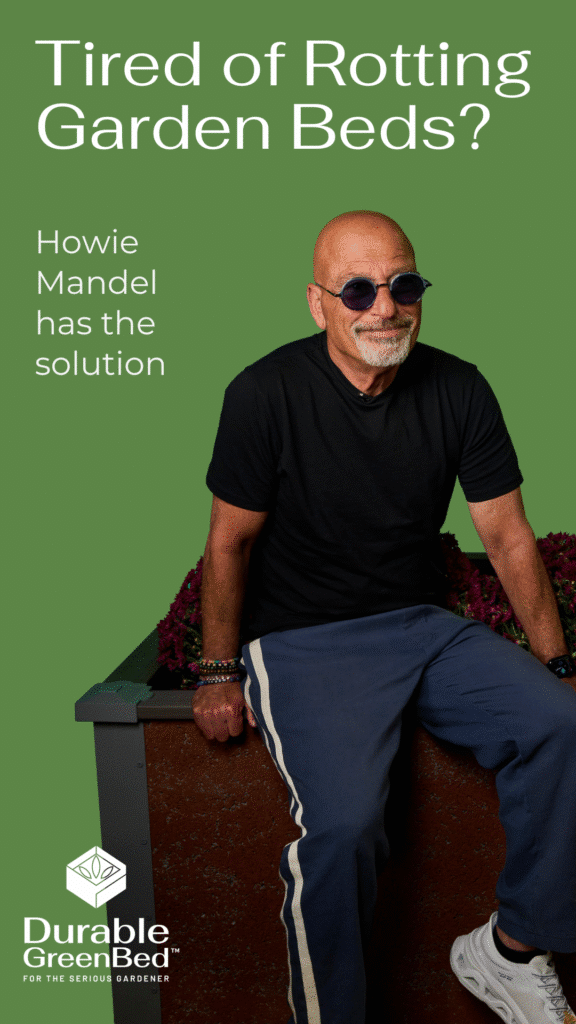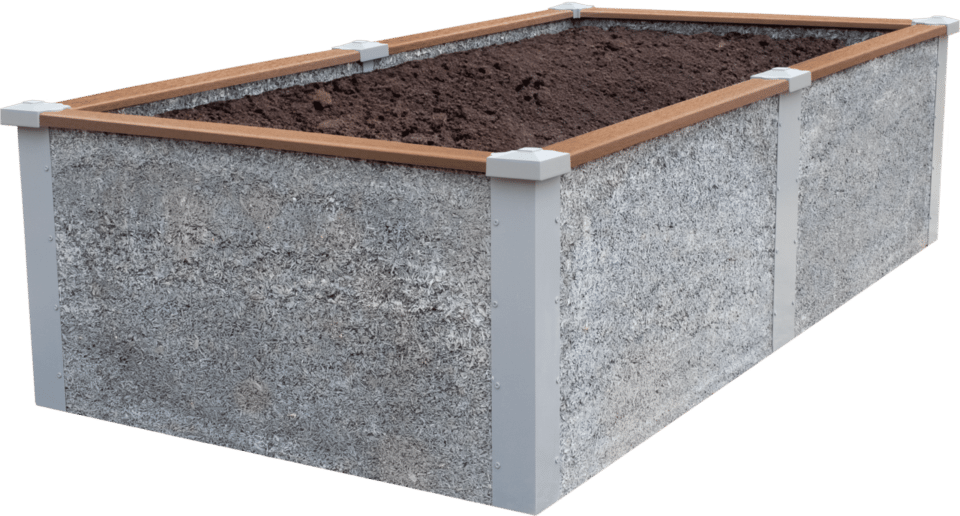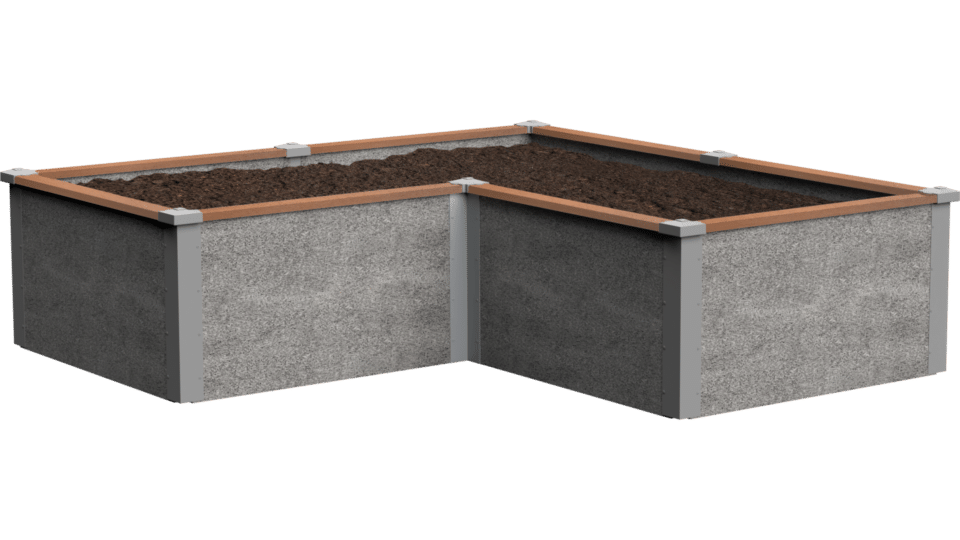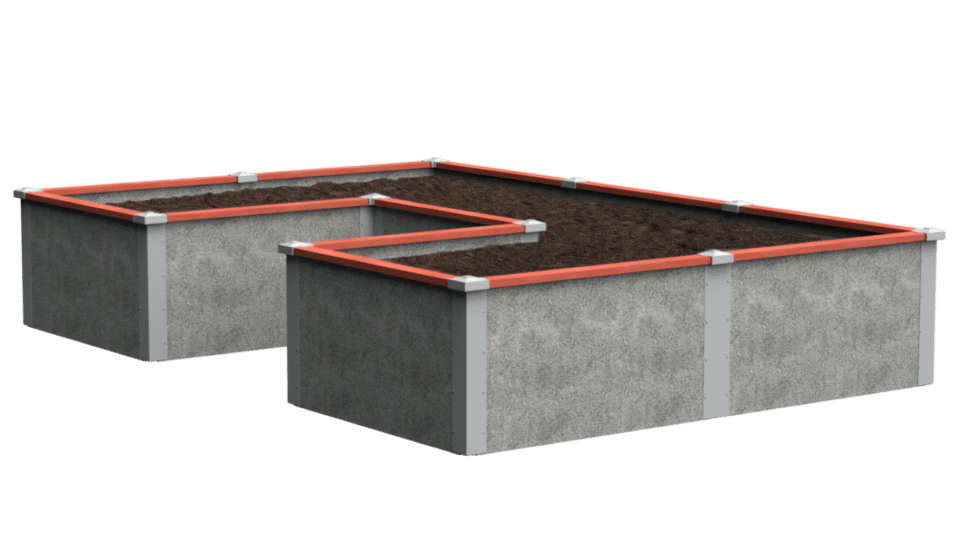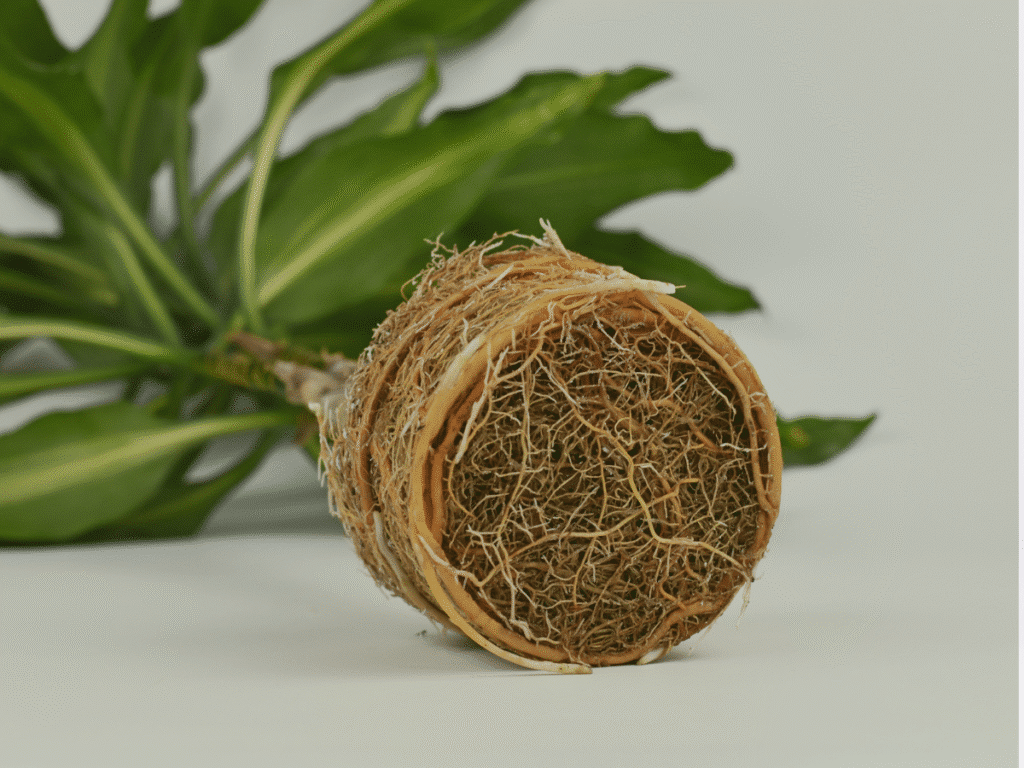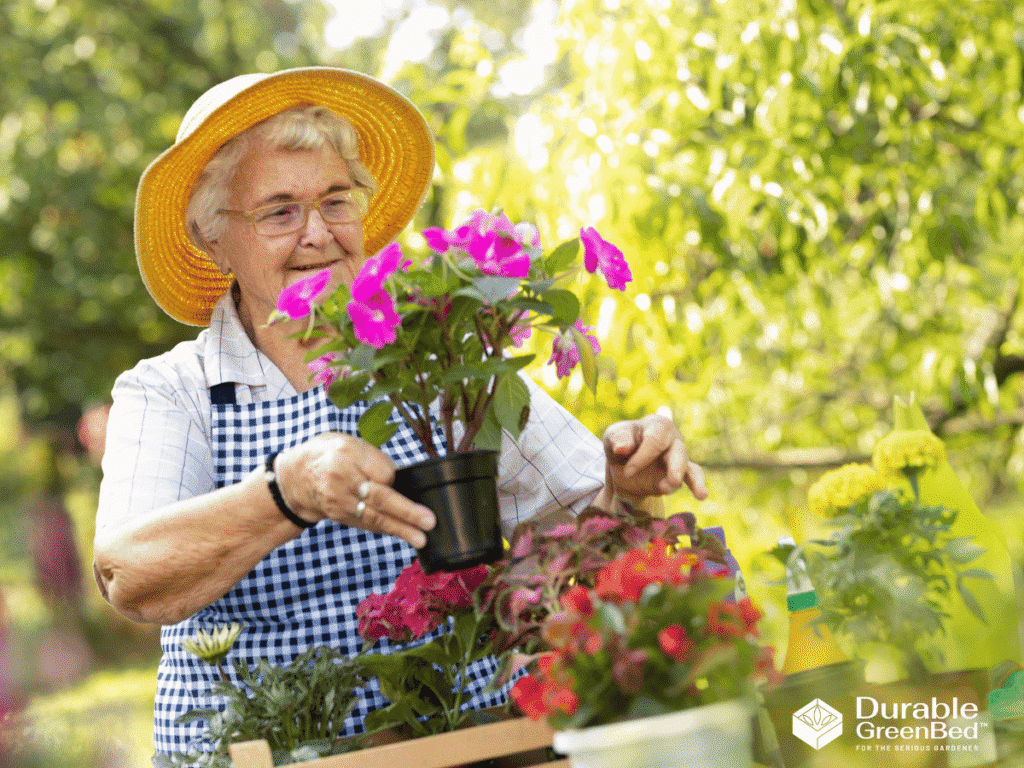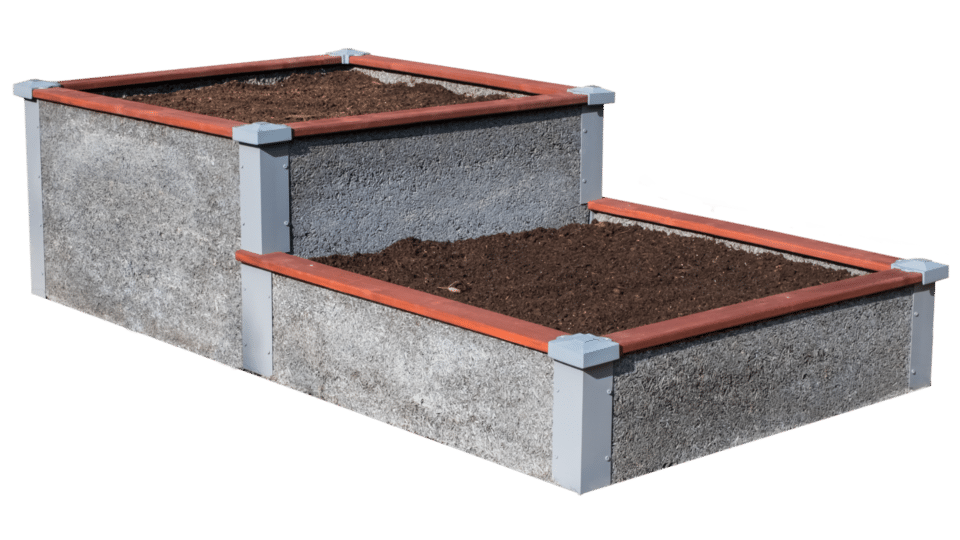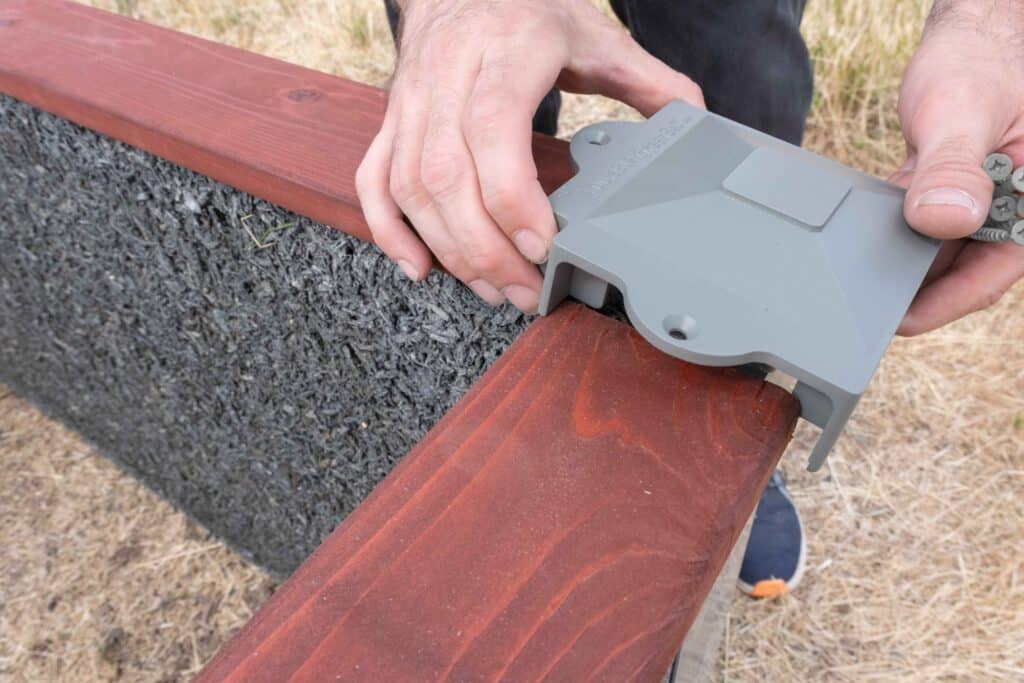
Hugelkulture Beds for quality soil, and a Greenhouse
Brian Patton, Auburn, Washington
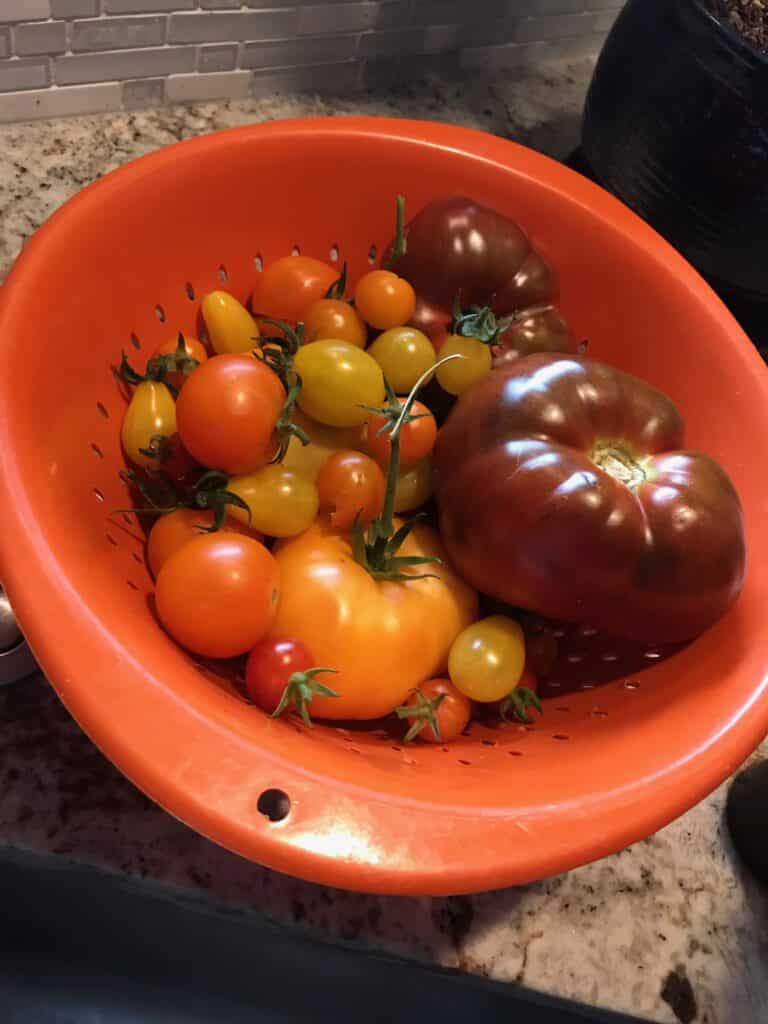
Brian Patton’s garden in Auburn, Washington, southwest of Seattle, is a gardening success story. This is the third growing season for his new Durable GreenBed Raised Garden beds, which he filled with a hugelkulture mix of woody debris rather than just topsoil. Patton purchased three, 4-by-20-foot Durable GreenBed Raised Garden Bed Kits that are each 2 feet high. On the north end of those beds he has a greenhouse.
“I’ve got a lot of space!” he says with a laugh. “I get my seeds planted early and because I can let them mature in the greenhouse before I put them out, it makes them hardier and they’re too big for the little slugs to eat.” Prior to installing the greenhouse, he says he used to spend $500 a year on hanging baskets. Now, his hanging plants make it through the winter, thanks to a little heater in the greenhouse. Patton enjoys growing a variety of vegetables, including portobello mushrooms and shiitake mushrooms that he’s starting to grow in the greenhouse. He plants onions, snap peas, and eight different kinds of tomatoes that are more exotic than the typical supermarket varieties. “I eat them fresh all season long,” he says. “I basically eat tomatoes with every meal.” Salad greens, potatoes, green beans and more are all part of his regular meals during the growing season.
Trellis Maximizes Growing Space
To maximize his growing space, he created a trellis system for the beds out of rebar and mesh. This supports the beans along with squashes, melons, and cucumbers. “Without the trellis they’ll take over your whole yard,” he says. Underneath the trellis he grows cauliflower, collard greens, radishes, and more. As a kid, Patton helped his grandfather garden. Then a few years ago he got started gardening again with a good friend who encouraged him and gave him tips for success.
When he really got serious about gardening, Patton knew he wanted raised beds that would stand the test of time. Patton has a small raised bed of strawberries that he planted two years ago that he says now already needs to be replaced. “I wanted something that I didn’t have to replace every three or four years,” he says. “I just looked on the internet and I found Durable GreenBed.”
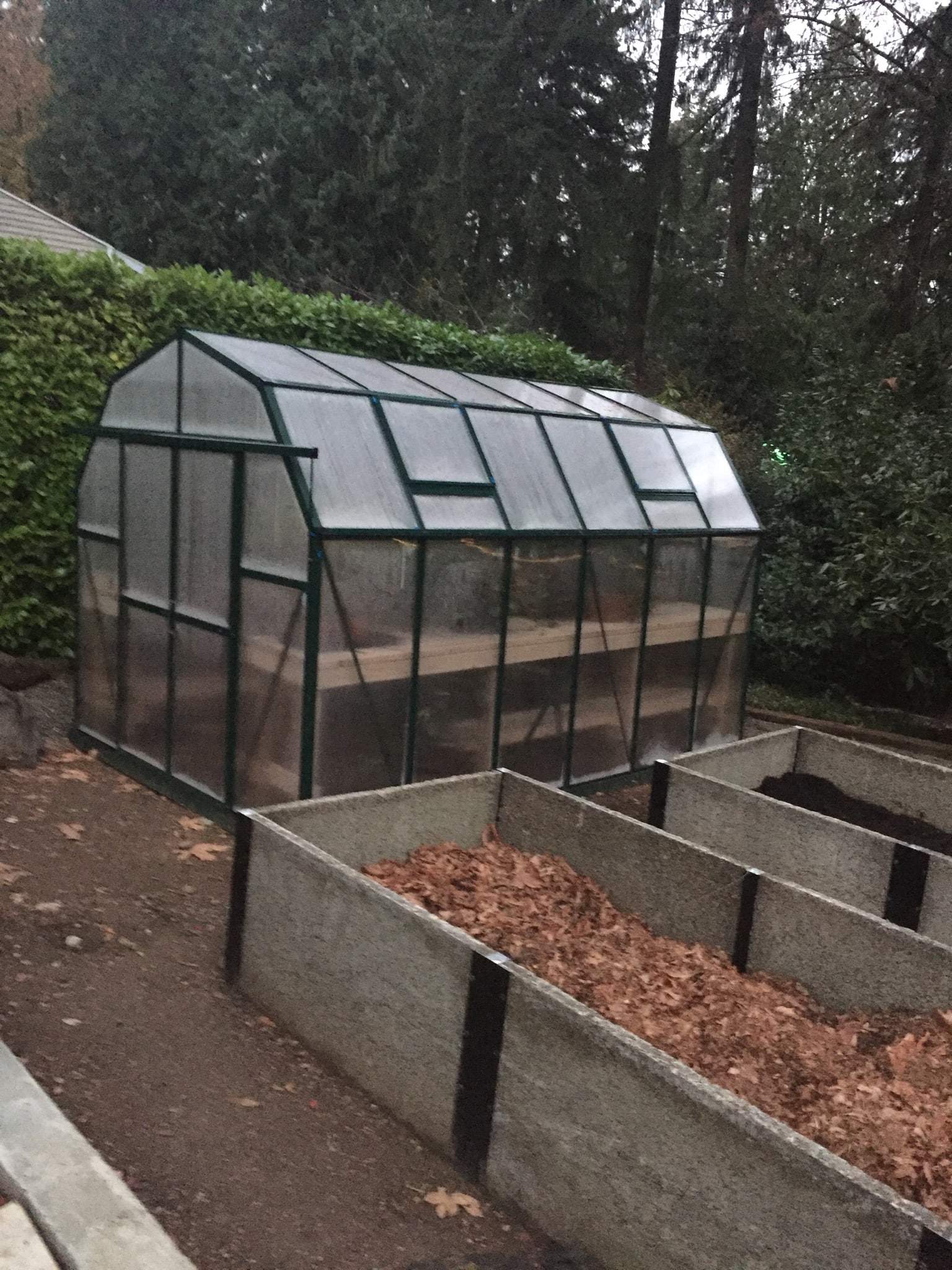
Deep Raised Gardening Beds
He also liked that the Durable GreenBeds were deep gardening beds, so he didn’t have to bend over. “I can just sit on the side, so it’s convenient,” he says. “I think too, that the sun warms the bed up because of the thermal mass of the blocks and makes things grow faster.” With the large size beds, he needed the best raised garden bed soil.
Patton lives on an acre and a half, with some wooded areas. To fill the beds, he followed the ancient art of hugelkulture, which is a tried and tested method for creating rich soil from woody debris.
Filling Deep Raised Beds With Hugelkulture
“I literally chopped up a couple of old trees that were rotting,” he explains. “When I put the beds together I dug down about 6 inches further and filled up about a foot, maybe a little more, with this punky wood. I just packed it in there. On top of that, I put about 10 inches of fresh horse manure. And I just let that sit over the winter. After that, I topped it with 8 to 10 inches of fresh compost. I fertilize a little bit, but I really don’t have to do anything.”
Hugelkulture beds need less water, as the woody material soaks up water and very slowly releases the moisture.It creates rich soil as the wood slowly decays. The decaying wood also produces heat, which warms the beds faster. Patton says that as the decomposition causes settling each year, he simply tops off the beds with more compost.
Patton spread playground-style wood chips around the garden beds, so he has no weeds. He also installed an irrigation system on a timer along with his Durable GreenBeds. With his greenhouse and bed set-up, he doesn’t have to spend his time weeding, watering, fertilizing, or replacing the garden beds every other year, so he can spend his time actually growing his plants. “I’m a lazy gardener!” he says with a laugh. “With the irrigation system, I can either pop a sprinkler on or a drip depending on what I’m growing, and I can change it out. If I take off and go fishing or whatever, it’s all still getting watered.”
Patton’s not yet retired, but over the past year he’s worked from home and he’s enjoyed being at home more and enjoying how productive his garden set-up is. “It’s pretty easy,” he says. “All I’ve got to do is get the plants in.”
There's Nothing Like Durable GreenBeds
It's the Walls!™
- Breathable
- Well Draining
- Higher Yields
- Prevents Slugs and Pests
- Non-Toxic
- 20-25 Year Lifespan
Shop Durable GreenBed Kits
-
Rectangular Raised Garden Bed Kit
$471.00 – $2,085.00Price range: $471.00 through $2,085.00 Select options This product has multiple variants. The options may be chosen on the product page -
L-Shaped Raised Garden Bed Kit
$786.00 – $1,305.00Price range: $786.00 through $1,305.00 Select options This product has multiple variants. The options may be chosen on the product page -
U-Shaped Raised Garden Bed Kit
$1,199.00 – $2,446.00Price range: $1,199.00 through $2,446.00 Select options This product has multiple variants. The options may be chosen on the product page
Shop Durable GreenBed Raised Garden Bed kits
-
Rectangular Raised Garden Bed Kit
$471.00 – $2,085.00Price range: $471.00 through $2,085.00 Select options This product has multiple variants. The options may be chosen on the product page -
L-Shaped Raised Garden Bed Kit
$786.00 – $1,305.00Price range: $786.00 through $1,305.00 Select options This product has multiple variants. The options may be chosen on the product page -
4’x8’ Stepped Raised Garden Bed Kit
$865.00 – $1,073.00Price range: $865.00 through $1,073.00 Select options This product has multiple variants. The options may be chosen on the product page -
U-Shaped Raised Garden Bed Kit
$1,199.00 – $2,446.00Price range: $1,199.00 through $2,446.00 Select options This product has multiple variants. The options may be chosen on the product page

